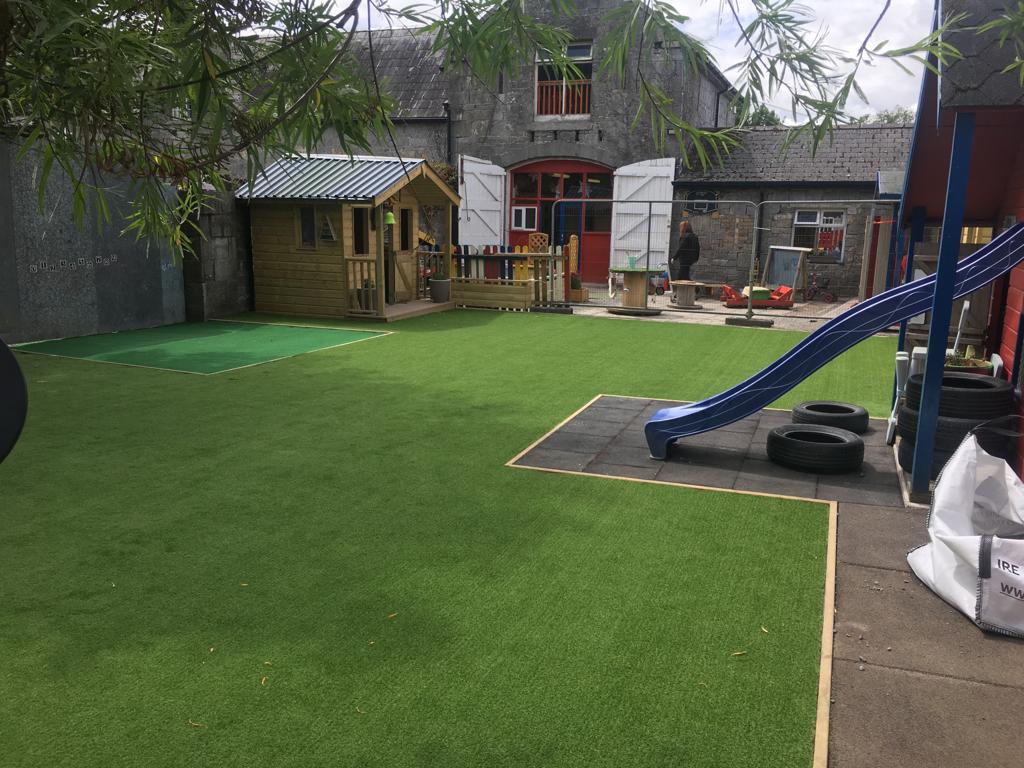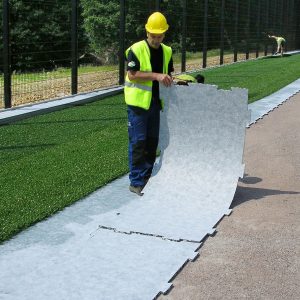Description
The playground surface has to protect a person from serious or lethal head injury when falling down from the playground equipment. Therefore a playground surface should meet or exceed the critical fall height of the installed playground equipment. Traditionally natural turf or loose materials, like wood or chips or even sand, are used for impact absorption at playgrounds. The quality of these materials is influenced by weather and pollution. Synthetic surfaces, like rubber tiles, are an alternative but synthetic turf is also a popular solution. This synthetic turf is typically a sand filled or dressed turf, similar to low-end field hockey turf. The sand is necessary to ‘balance’ the turf and to protect against vandalism.
However, this sand filled turf does not absorb impacts and will not give fall protection. To achieve the necessary fall protection, the synthetic turf can be combined with ProPlay for Playgrounds shock pads, to reach critical fall heights of more than 3 meters. The ProPlay shock pads can be installed easily at a sand or crushed stone subbase, or an (existing) concrete subbase. Due to the very high (water) permeability, the surface will remain ‘dry’ during and after heavy rainfall.

Note: Above critical fall heights are measured according to EN 1177:2008 when combined with a 24 mm pile height synthetic turf filled with 25 kg/m² silica sand.


